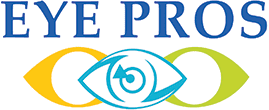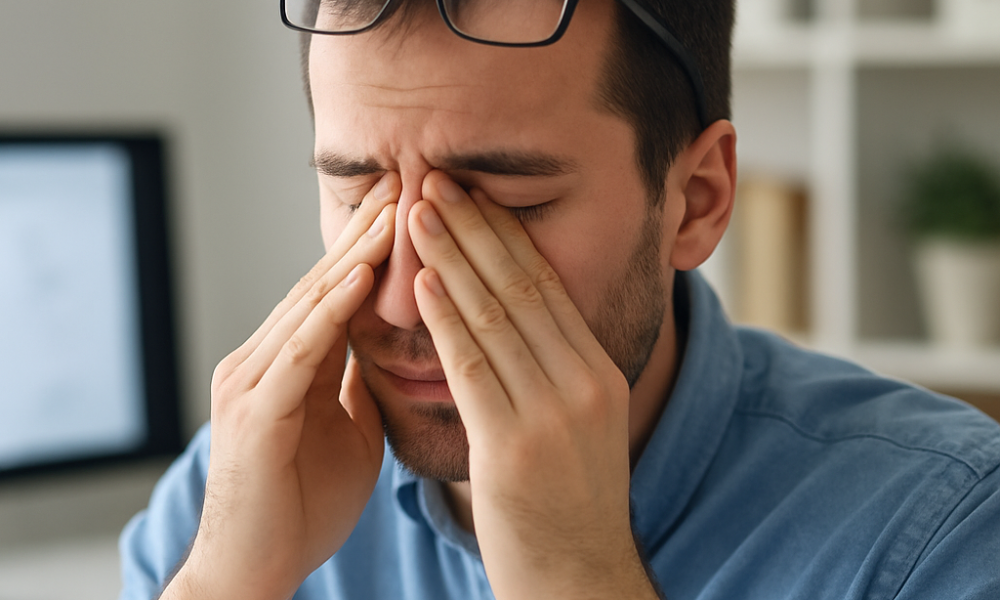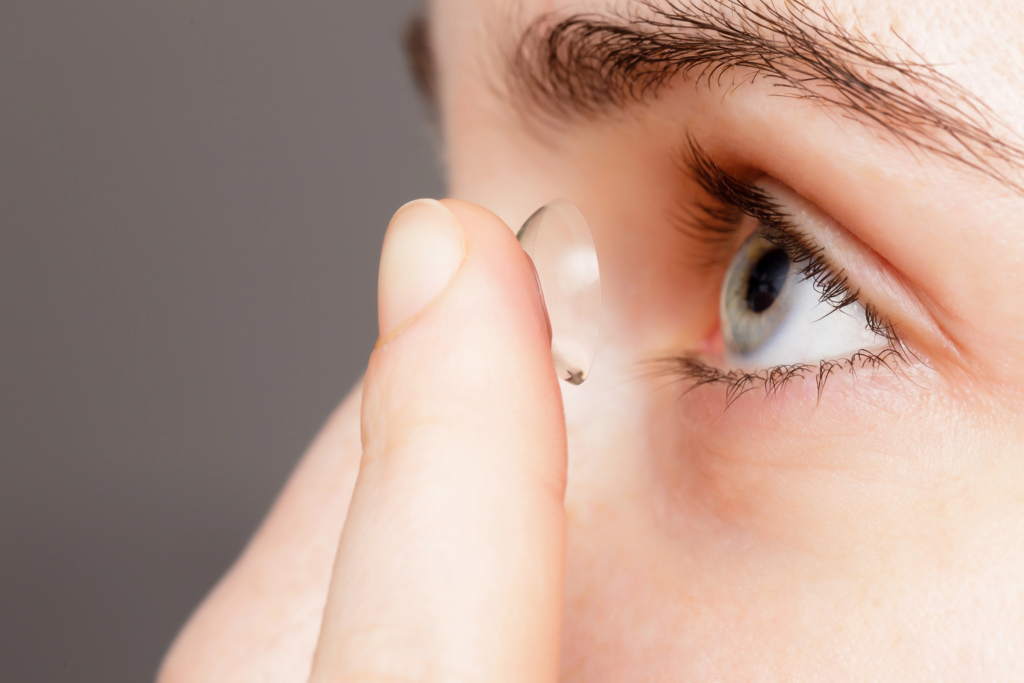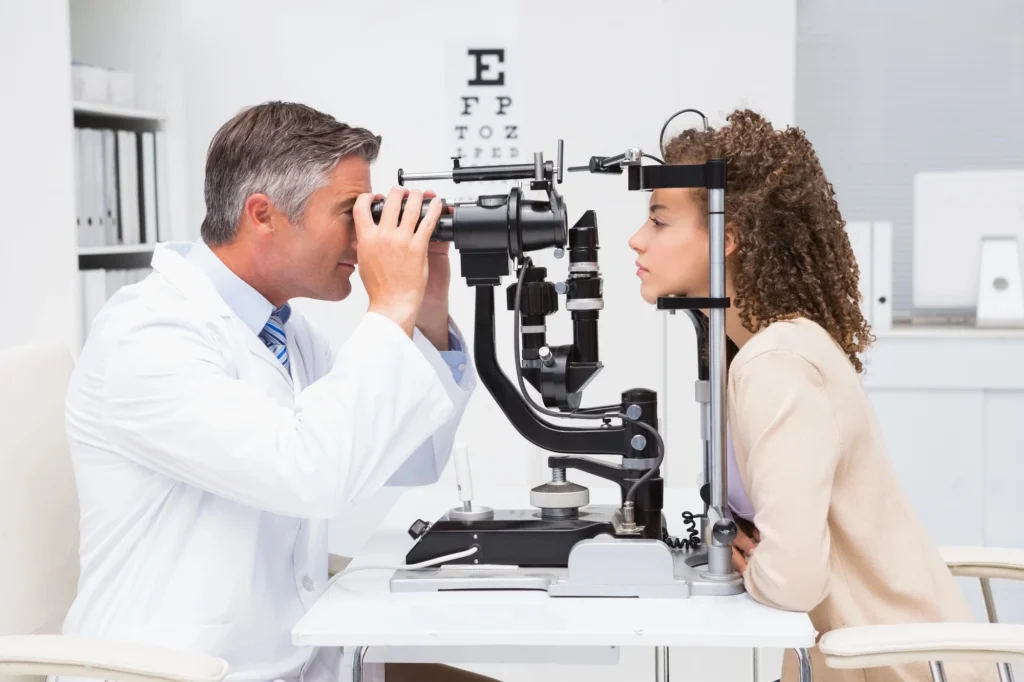In today’s digital-first world, spending hours glued to screens has become second nature. Whether it’s a smartphone, tablet, computer, or TV, our eyes are working overtime — often without us realizing the toll it takes. This nonstop exposure has led to a sharp rise in digital eye strain, a modern condition that leaves millions struggling with tired, irritated eyes by the end of the day.
But is there a way to reverse digital eye strain once it sets in? The trusted team at Eye Pros in Logan, Utah is here to shed light on the truth behind screen-related vision problems. As leading eye doctors dedicated to your eye health, we’re diving into the causes of digital eye strain, whether it’s truly reversible, and the simple but powerful steps you can take to protect your vision — now and for the future.
Before you accept sore, blurry eyes as the “new normal,” let’s take a closer look at what’s happening behind the scenes — and what you can do about it.
What Causes Digital Eye Strain?
Digital eye strain—sometimes called computer vision syndrome—happens when your eyes work harder than they should for long periods without a break. The result? Tired, dry, and sometimes painful eyes that struggle to keep up with your screen-heavy lifestyle. Several common factors can contribute to this modern vision problem:
- Extended screen time: Staring at devices for hours without rest forces your eyes to constantly focus and refocus, leading to fatigue.
- Poor lighting and glare: Harsh overhead lighting or excessive screen glare can strain your eyes, forcing them to work harder.
- Improper viewing distances: Holding your phone too close or sitting too far from a computer can put additional stress on your eyes.
- Blue light exposure: Digital devices emit blue light, which scatters more easily and makes focusing more difficult for your eyes.
- Poor posture: Slouching or hunching over devices can cause neck, shoulder, and back pain, which often worsens eye strain symptoms.
At Eye Pros in Logan, our experienced eye doctors often see patients who don’t even realize how much their daily screen habits are affecting their vision. Recognizing these common triggers is the first step toward protecting your eyes — and reclaiming comfortable, clear sight.
Is Digital Eye Strain Reversible?
The good news is that in most cases, digital eye strain is not a permanent condition. With the right adjustments to your daily habits and early intervention from a trusted eye doctor, many of the uncomfortable symptoms can be greatly reduced—or even eliminated altogether.
Unlike structural eye problems such as cataracts or glaucoma, digital eye strain is typically a functional issue. It stems from the way we use our eyes, not from lasting damage to the eye itself. This means that when you take proactive steps to change your screen habits, improve your work environment, and care for your vision, you can often “reverse” the strain and restore comfortable, clear sight.
However, it’s important to note that long-term neglect of digital eye strain symptoms can sometimes contribute to other vision problems over time. That’s why experts at Eye Pros in Logan recommend not waiting for symptoms to worsen before taking action. A comprehensive eye exam can help rule out underlying issues and tailor a personalized care plan designed to keep your eyes healthy for the long haul.
In short: digital eye strain can often be reversed—but only if you make your eye health a priority starting today.
Tips to Relieve and Reverse Digital Eye Strain
If you’re already feeling the effects of digital eye strain, don’t worry—you’re not stuck with it forever. By making a few smart changes to your daily habits, you can give your eyes the relief they desperately need. Here are some expert-approved strategies our team at Eye Pros in Logan often recommends:
- Follow the 20-20-20 rule: Every 20 minutes, take a 20-second break and look at something 20 feet away. It’s a simple but powerful way to reset your focus.
- Adjust your screen settings: Reduce brightness to match your environment, increase contrast for easier reading, and enlarge text if needed to avoid squinting.
- Use artificial tears: Digital screens reduce how often you blink, leading to dryness. Lubricating eye drops can help keep your eyes moist and comfortable.
- Invest in blue light protection: Specialized lenses or screen filters can minimize blue light exposure, which may reduce fatigue and help you sleep better at night.
- Create an ergonomic workspace: Position your monitor about an arm’s length away, slightly below eye level, and ensure your chair supports good posture.
- Limit screen time outside of work: Give your eyes true rest by setting screen-free hours in the evening whenever possible.
Remember: it’s not just about easing today’s discomfort—it’s about building habits that protect your eyes for the future. If symptoms persist despite these adjustments, it’s important to schedule an evaluation with an experienced eye doctor. At Eye Pros, we can customize solutions based on your unique vision needs and lifestyle.
When to See an Eye Doctor in Logan
While most cases of digital eye strain can be improved with simple lifestyle changes, some symptoms are a sign that it’s time to seek professional help. Ignoring persistent discomfort could mean missing an underlying issue that needs more targeted treatment.
You should schedule an appointment with an eye doctor if you experience any of the following:
- Blurry vision that doesn’t clear after resting your eyes
- Persistent dry eyes or burning sensations
- Double vision or trouble focusing
- Neck, shoulder, or back pain that worsens with computer work
- Increased sensitivity to light
At Eye Pros in Logan, we offer comprehensive eye exams specifically designed to detect the subtle signs of digital eye strain—and to rule out other vision problems that could be making your symptoms worse. Our experienced team can recommend personalized solutions, whether that’s computer-specific glasses, updated prescriptions, or strategies to optimize your workspace for better eye health.
Don’t wait until minor discomfort turns into a major disruption. An early visit to a trusted eye doctor can make all the difference in protecting your sight and keeping you comfortable in today’s screen-driven world.
FAQs About Digital Eye Strain
What is digital eye strain?
Digital eye strain, also known as computer vision syndrome, is a group of eye and vision-related problems that result from prolonged use of digital screens. Symptoms can include tired eyes, blurred vision, headaches, dryness, and even neck and shoulder pain. The condition is extremely common today due to the number of hours people spend on devices like smartphones, tablets, and computers.
How do you fix digital eye strain?
Fixing digital eye strain typically involves a combination of better screen habits and targeted treatments. Following the 20-20-20 rule, adjusting screen brightness and posture, using artificial tears, and wearing blue light blocking glasses are effective strategies. Seeing an eye doctor can help create a customized plan if symptoms persist.
How long does a digital eye strain last?
Mild symptoms of digital eye strain can improve within a few hours to a few days once you start adjusting your habits. However, if the underlying causes aren’t addressed—such as poor screen ergonomics or uncorrected vision issues—discomfort can persist or worsen over time.
Do I need glasses for digital eye strain?
Not everyone needs glasses specifically for digital eye strain, but they can be very helpful for some people. Special computer glasses with anti-reflective coatings or blue light filters can reduce glare and strain. If you’re experiencing persistent symptoms, an eye doctor at Eye Pros in Logan can determine whether prescription or specialty lenses would benefit you.
Can digital eye strain cause permanent damage?
While digital eye strain itself doesn’t usually cause permanent vision damage, chronic stress on the eyes can contribute to worsening vision or make existing conditions more noticeable. It’s important to manage symptoms early to maintain long-term eye health.
How long does it take for symptoms to go away?
Recovery time varies depending on the severity of the strain and how quickly you adjust your screen habits. Many people start feeling relief within a few days of making changes, but for others, it may take several weeks of consistent care and attention to fully resolve symptoms.
Are blue light glasses really effective?
Blue light glasses can help some people reduce symptoms of digital eye strain, particularly if they are sensitive to the wavelengths emitted by screens. While they are not a guaranteed cure, many patients report less fatigue and better sleep quality when using them. An eye doctor can recommend whether they’re right for your specific needs.
Protect Your Eyes for the Long Haul
If your child struggles with reading, squints often, tilts their head, or complains of headaches, it could indicate an underlying vision problem. Blurry vision, eye rubbing, short attention spans, or difficulty focusing during schoolwork are other common signs that their eyes may not be working properly.
Catching these issues early is crucial for supporting your child’s learning, development, and confidence. Regular eye exams help ensure that minor vision problems don’t turn into major barriers later on. If you notice any of these signs, don’t wait—schedule a visit with a trusted eye doctor in Layton.





